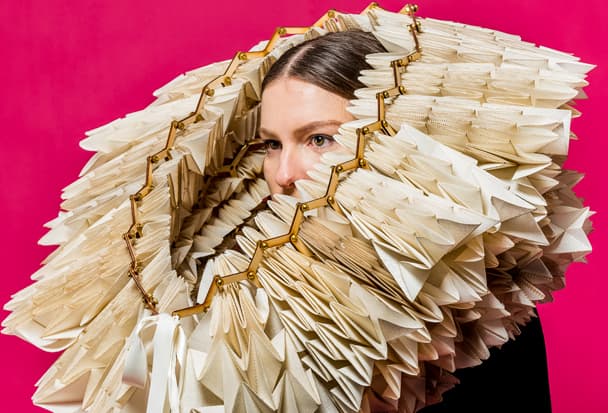— Feature
Ingo Maurer
The designer created products and installations that celebrate humans’ relationship with natural and artificial light.
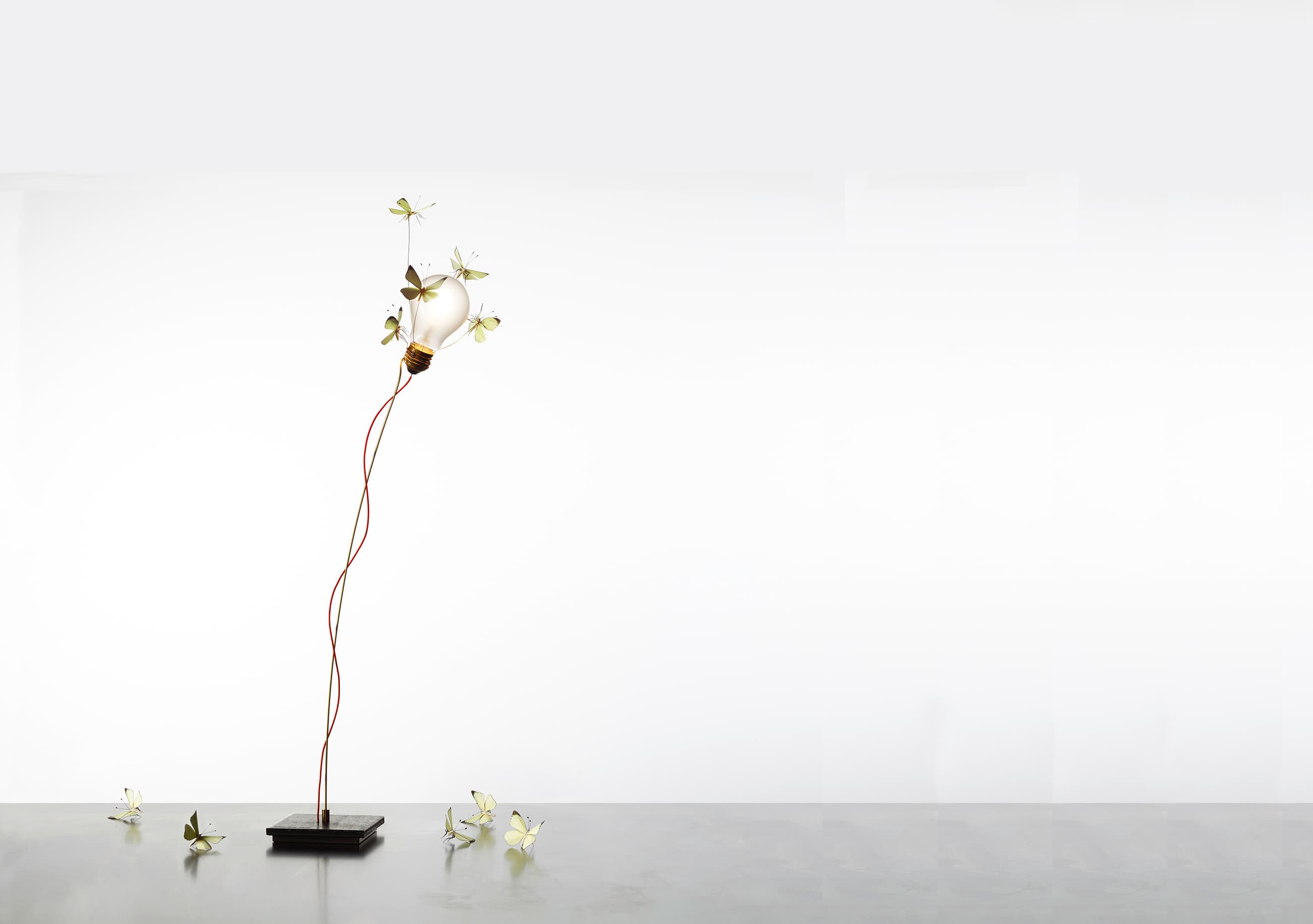
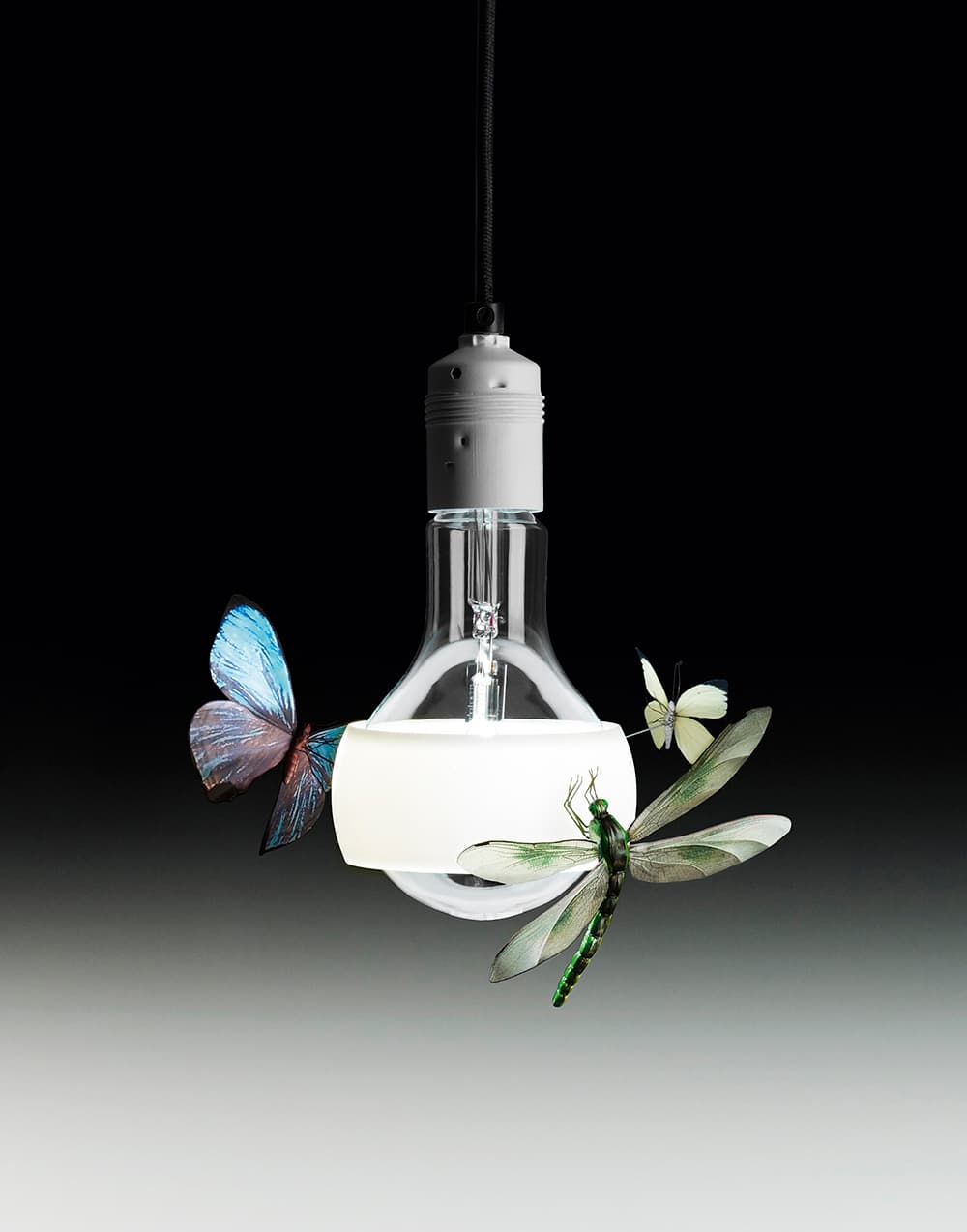
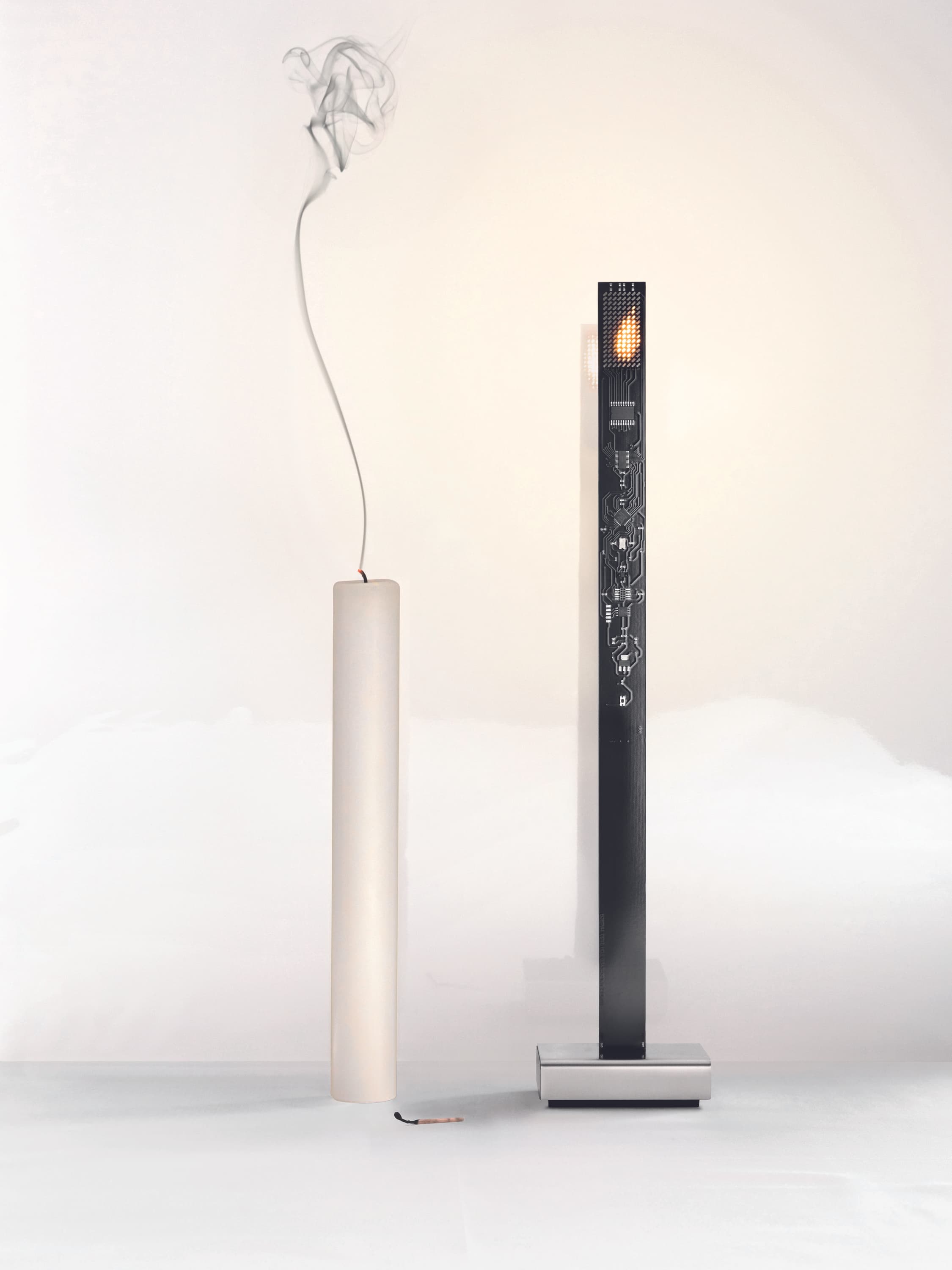
At about the same time that Goseck Circle (see Feature 1) was erected, humans learned how to make light by igniting dry material with flints. According to archaeological evidence, the invention of the lamp took place not long afterward when fire (which had been transported by self-consuming torch) was placed in shells or hollowed- out rocks. In the eras that followed, lighting design was largely a process of finding ever more efficient technologies— kerosene, gas, carbon filament, mercury vapor, diode — for sustaining and then replacing flame.
That arc changed in 1966 when Ingo Maurer launched his Bulb table lamp, in which bulb-shaped Murano crystal surrounds a simple incandescent lightbulb. A revelation to industry colleagues and the public alike, Bulb suddenly elevated light’s enclosure to the same importance as the light itself, because Maurer had treated it as a canvas for his personal observations.
Commentators often praise the humor that the German designer brought to the medium. Handwritten notes, shattered porcelain plates, and rubber gloves were all fair game as holders and shapers of light. Fans also make the point that Maurer was just as fascinated by emerging lighting technologies as his predecessors, and he regularly pioneered applications for LEDs.
Yet not every visionary has had the longevity of Maurer, who worked consistently and charismatically until his death in 2019. One reason for his remarkable staying power is the poignance that lies just beneath even his most comical works. Calling light “the spirit which catches you inside” Maurer understood that manmade illumination could be as emotionally powerful as daylight— that it could stimulate memory, prompt feelings of safety, and inspire camaraderie. His works pay tribute to the natural phenomena that long dictated everyday life, and to humans’ millennia-spanning efforts to create light in the sun’s absence.

Like Ingo Maurer before them, these lighting designers are producing meditations on the natural world.
Davide Groppi
Italian designer Davide Groppi’s early career bears a striking resemblance to Ingo Maurer’s. Just as the maestro worked as a graphic artist before bursting onto the design scene with the 1966 launch of Bulb, so Groppi created mechanical illustrations for a living and then made a splash in 1993, when 40 of his Baloo lamps were displayed at the Salone del Mobile. Groppi has also shared Maurer’s fascination with recreating natural phenomena with electric light. His iconic Moon pendant is a spherical PVC frame covered in rice paper, the variations in which evoke lunar topography.
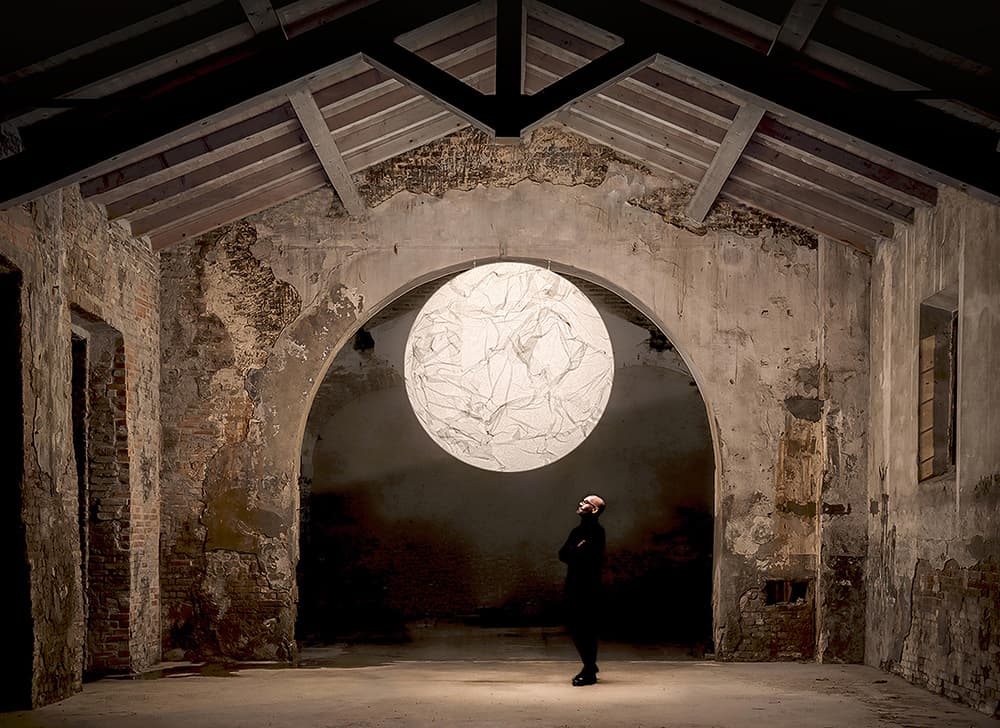
Marjan van Aubel
In 2021, Dutch designer Marjan van Aubel launched a Kickstarter campaign for a pendant light called Sunne that was fully funded by the next day. The suspended fixture elegantly packs several of-the-moment themes in one capsule-shaped product: it is powered by integrated photovoltaics, programmable by smartphone, and color-changing according to users’ circadian rhythms. With the help of her new business and technologist partner Erwin Marges, van Aubel formally launched Sunne in 2022, and the luminaire is being made to order.
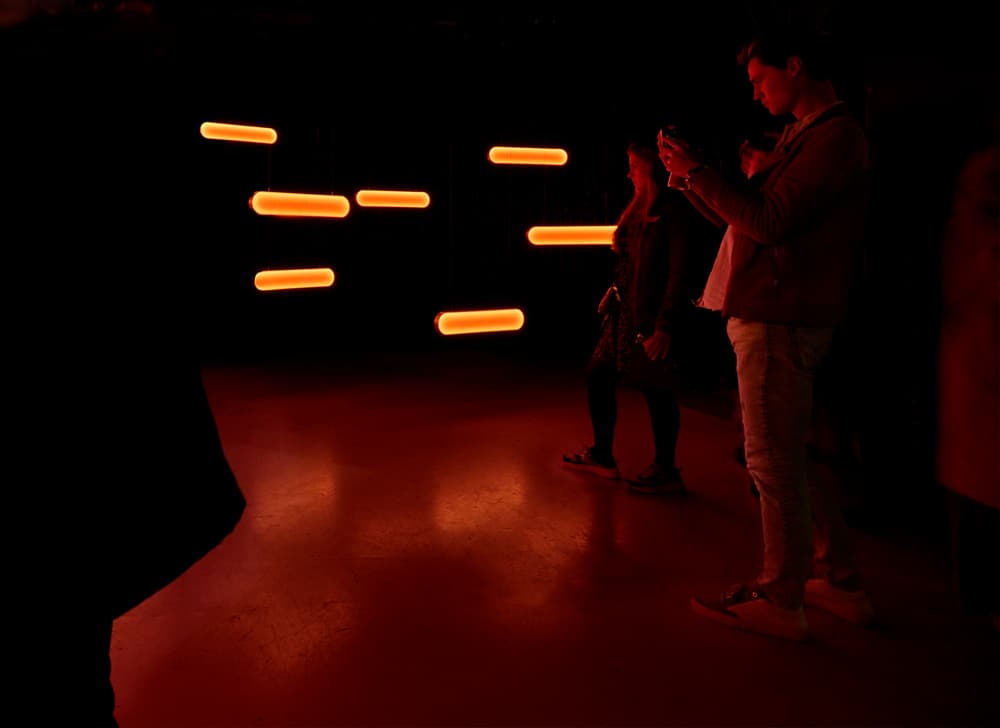
At about the same time that Goseck Circle (see Feature 1) was erected, humans learned how to make light by igniting dry material with flints. According to archaeological evidence, the invention of the lamp took place not long afterward when fire (which had been transported by self-consuming torch) was placed in shells or hollowed- out rocks. In the eras that followed, lighting design was largely a process of finding ever more efficient technologies— kerosene, gas, carbon filament, mercury vapor, diode — for sustaining and then replacing flame.
That arc changed in 1966 when Ingo Maurer launched his Bulb table lamp, in which bulb-shaped Murano crystal surrounds a simple incandescent lightbulb. A revelation to industry colleagues and the public alike, Bulb suddenly elevated light’s enclosure to the same importance as the light itself, because Maurer had treated it as a canvas for his personal observations.
Commentators often praise the humor that the German designer brought to the medium. Handwritten notes, shattered porcelain plates, and rubber gloves were all fair game as holders and shapers of light. Fans also make the point that Maurer was just as fascinated by emerging lighting technologies as his predecessors, and he regularly pioneered applications for LEDs.
Yet not every visionary has had the longevity of Maurer, who worked consistently and charismatically until his death in 2019. One reason for his remarkable staying power is the poignance that lies just beneath even his most comical works. Calling light “the spirit which catches you inside” Maurer understood that manmade illumination could be as emotionally powerful as daylight— that it could stimulate memory, prompt feelings of safety, and inspire camaraderie. His works pay tribute to the natural phenomena that long dictated everyday life, and to humans’ millennia-spanning efforts to create light in the sun’s absence.

Like Ingo Maurer before them, these lighting designers are producing meditations on the natural world.
Davide Groppi
Italian designer Davide Groppi’s early career bears a striking resemblance to Ingo Maurer’s. Just as the maestro worked as a graphic artist before bursting onto the design scene with the 1966 launch of Bulb, so Groppi created mechanical illustrations for a living and then made a splash in 1993, when 40 of his Baloo lamps were displayed at the Salone del Mobile. Groppi has also shared Maurer’s fascination with recreating natural phenomena with electric light. His iconic Moon pendant is a spherical PVC frame covered in rice paper, the variations in which evoke lunar topography.

Marjan van Aubel
In 2021, Dutch designer Marjan van Aubel launched a Kickstarter campaign for a pendant light called Sunne that was fully funded by the next day. The suspended fixture elegantly packs several of-the-moment themes in one capsule-shaped product: it is powered by integrated photovoltaics, programmable by smartphone, and color-changing according to users’ circadian rhythms. With the help of her new business and technologist partner Erwin Marges, van Aubel formally launched Sunne in 2022, and the luminaire is being made to order.




